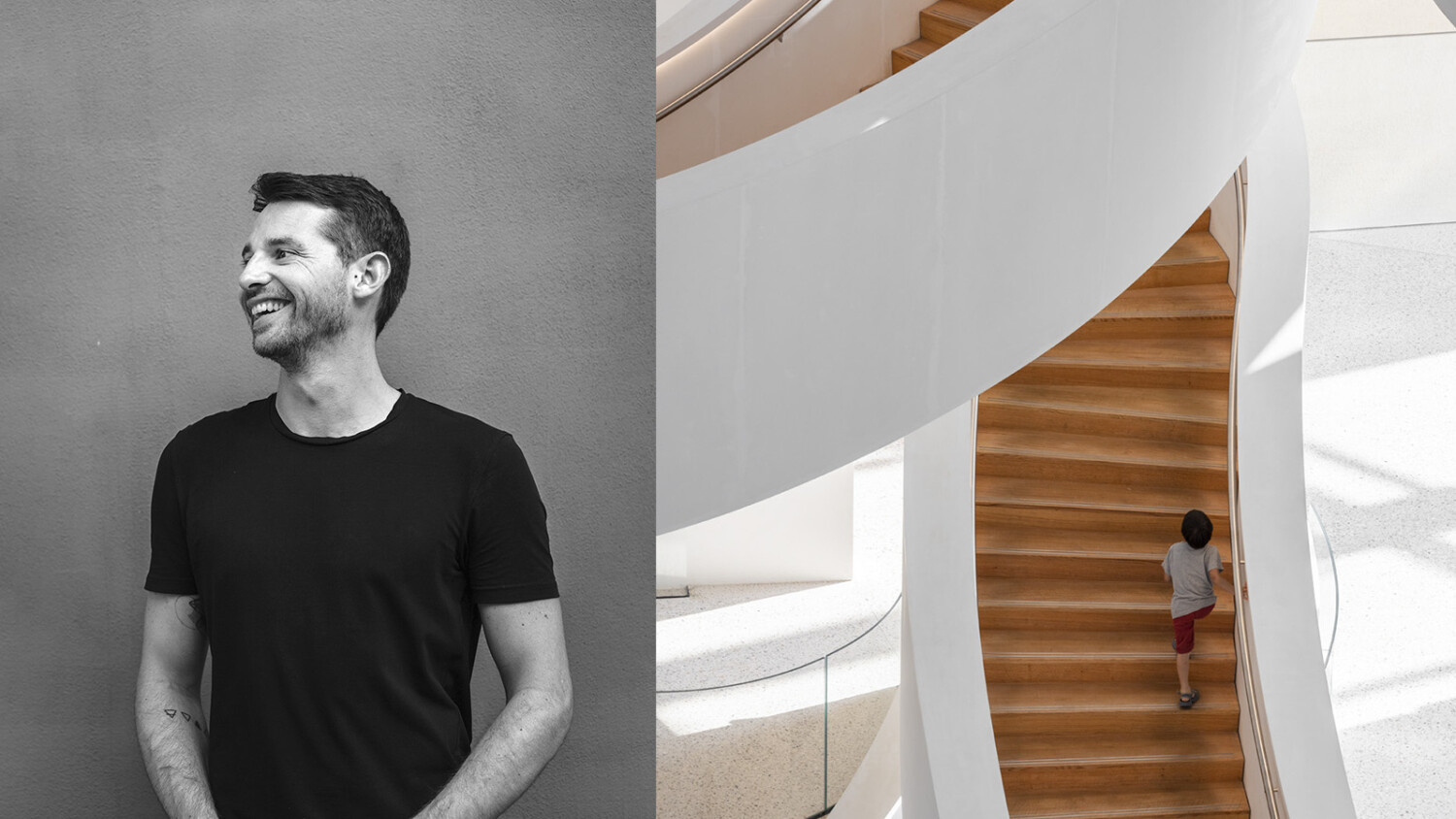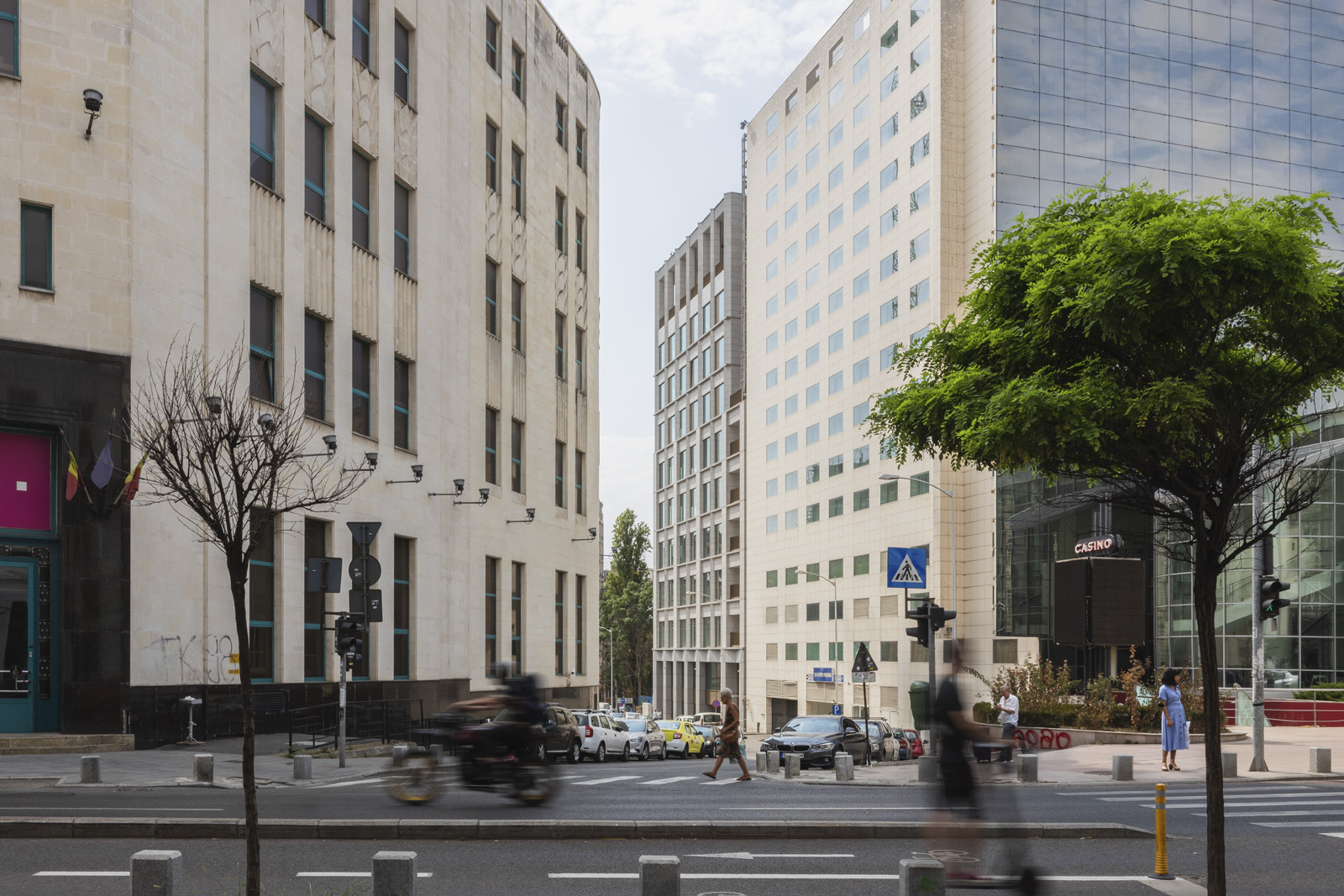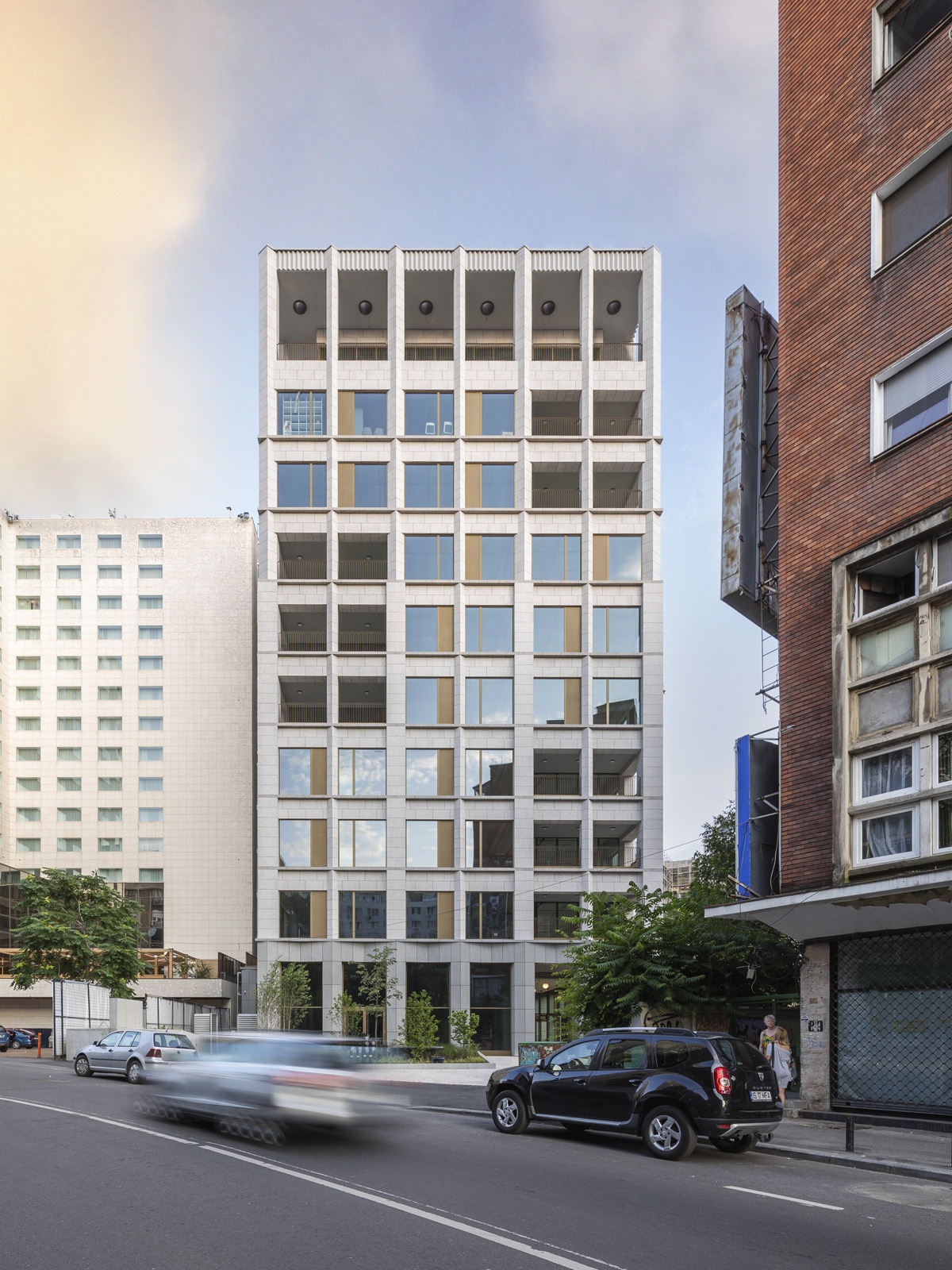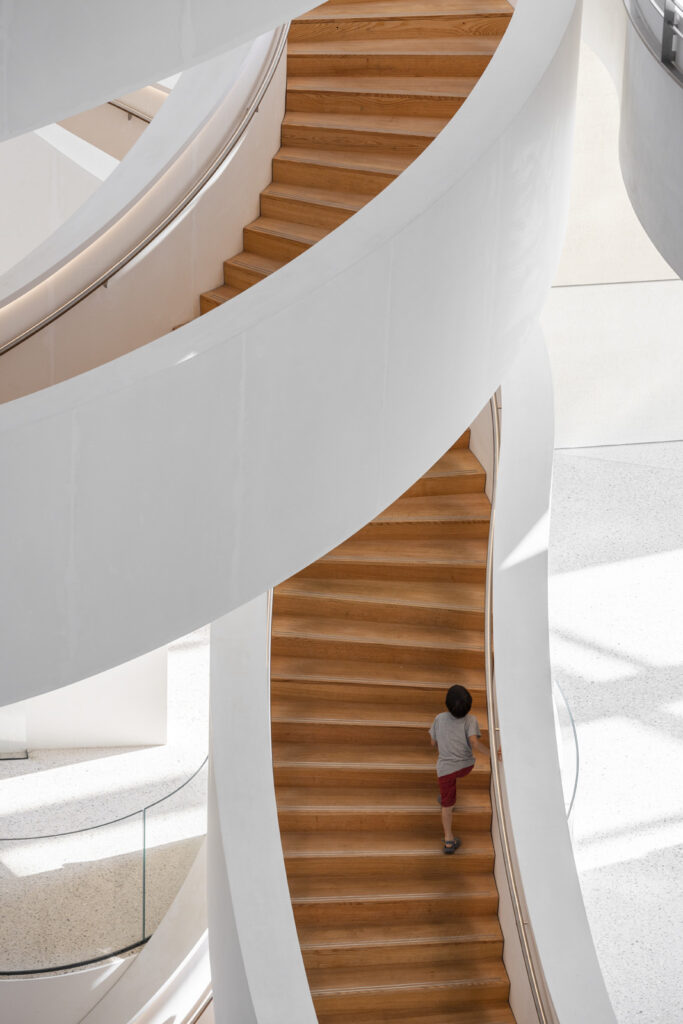Meet Adrien Guitard, an Up and Coming French Architectural Photographer
Adrien Guitard is one of the up-and-coming architectural photographers that has caught my attention. Over the past few years, he has shared some really good projects. Adrien was a trained architect but has switched his career path over to photography.
Kyrre: Hi Adrien! How are you? I have been following you on Instagram for some time now, and I’m impressed by your work. What’s your background and how did you get into architectural photography?
Adrien: Hello Kyrre! I am fine thank you. I am really glad to be interviewed and featured in the media I am spending most of the time on! Thank you very much for the invitation.
To talk about me, I am a French architect and architectural photographer based in the south of France and in Romania.
I started photography in my early [years at] 16 and turned quite naturally to architectural photography throughout my time at University. After studying Architecture in Marseille, France, and while practicing as an architect, I felt the need to include my passion for photography in my career.
When I started practicing as a photographer, I quickly realized that my architect training was a major asset in mastering the composition, light, lines and forms in order to make quality architecture photos. I decided to become a professional photographer.
I have been a freelance photographer for two years, working mainly between France and Romania.
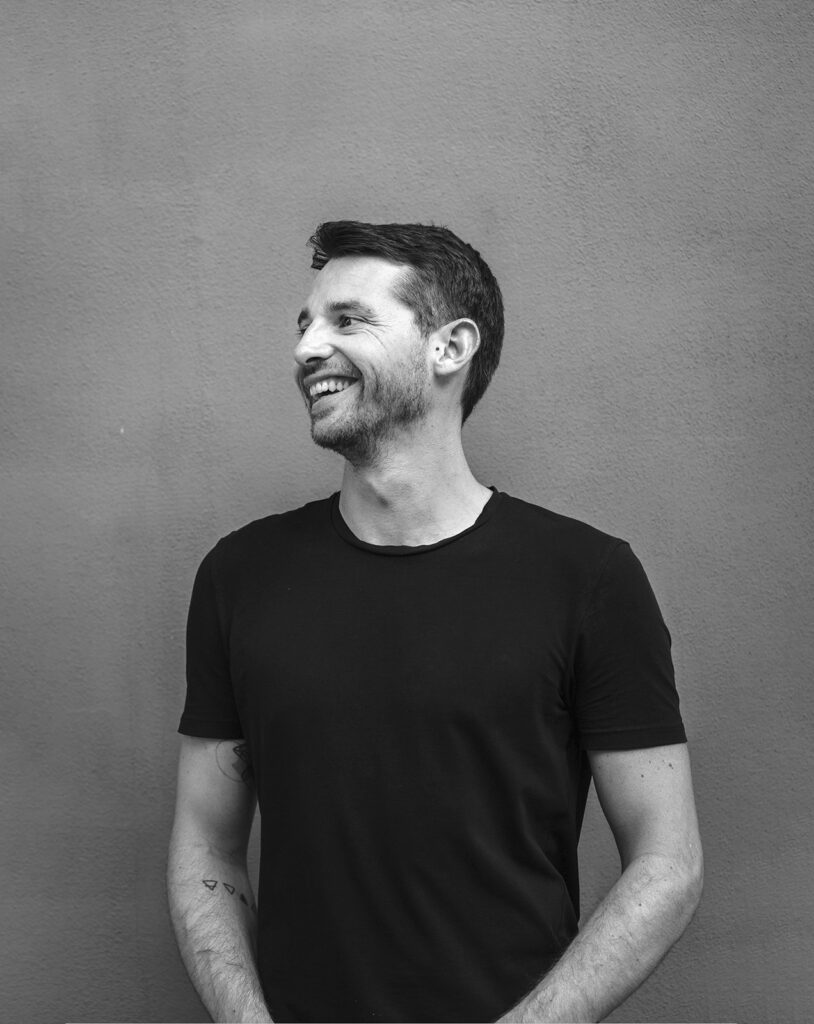
Kyrre: What made you do the shift from working as an architect to becoming a full-time photographer?
Adrien: Well, even if I would love to, I am still not a full-time photographer. I am currently working as an architect and doing photography gigs from time to time. I am still trying to build my career around photography though, and take the time to do it right.
I also recently moved back to France after living almost 3 years abroad and starting my photographer career abroad. I need to develop a new network here and it takes time.
But to answer the question, I think the shift happened in quite a natural way. After my first gig, I remember coming home, late, exhausted but telling myself « that’s what you are supposed to do ».
Photography was always a big passion for me, and architecture too. After practicing as an architect, I realized that I was expressing my love for architecture and the built environment better through photography.
I also love designing, don’t get me wrong, but I think I like the projection of architecture through photography and images more. I like analyzing it, criticizing it through another medium, and I like helping architects to promote this new world they are building every day.
Another point, I reached a time where I also wanted to grow my thing. Being an architect nowadays and running an office is quite tough and not for everybody. The more I practiced in an office, the more I felt it’s something I couldn’t handle…
Photography is also a really hard world, even more so, architectural photography. It is a tough market to enter but I want to take the risk.
That’s why I am trying to work with young offices, I believe in long-term collaboration. The architects and photographers should work hand in hand.
Kyrre: Do you see being trained as an architect as an advantage for you as a photographer? If so, how?
Adrien: What I love in the relationship between being an architect and an architectural photographer is that it’s a win-win relationship. Photography helps me to understand architecture in its finest details, and my architect training is clearly a major asset in mastering the composition, light, lines and forms in order to make a quality architecture photo.
Having studied architecture has helped me deeply in reading people’s use of space, understanding architects’ intentions, proportion and composition, and in questioning my purpose as a photographer.
But where I see the biggest benefit is in the dialogue with the client. Working mainly for architecture offices, I can easily relate to the discourse of the architect, the purpose of his design, the choices he made in conception and the understanding of the spaces he created. I think that is a really important point for photographers. Architects are our clients and we shouldn’t forget to show what they want to talk about through their architecture.
I believe what makes an architectural photographer stand out is to be genuinely interested in our client’s work. This business is not about us – about being an artist – it is about them. We create images of their work in order to help them promote their passion, their love of architecture and design. That’s why I try not to consider myself as an artist or a photographer but more as an architect having a camera.
Finally, a significant part of the architectural process is the representation of buildings from concept sketches through technical documentation drawings to finished photographs, and it helps to have personally engaged in that process.
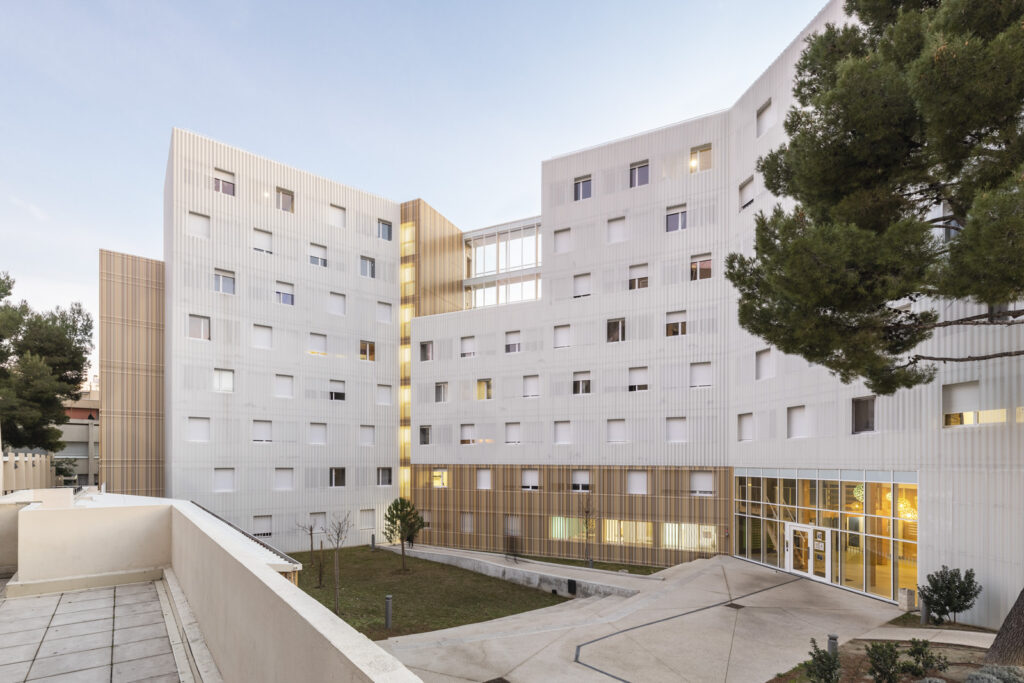
Kyrre: How did you get your first clients? How has it evolved over the years, and how do you approach new clients now that you’re an established photographer? How do you see the market in your area?
Adrien: I started my architectural photography career in Romania where I lived for two years. Architectural photography is still a niche, and a really specific domain. With architecture being not so popular in Romania, I’ll let you imagine how it could be with architectural photography. But I decided to take my chance. Being an architect and also being in a new emerging market for this country.
With no portfolio, I listened to one of the great pieces of advice I heard on the BAAM Podcast. I started to shoot all the great architecture from the capital, shared the photos on my Instagram, and started to build a website. That’s how I practiced my techniques and learned how to shoot architecture. It took confidence in my skills and trained my eye. I had time, was in no rush of a paid gig, so I could also come back on each project at the perfect hour, with the perfect conditions, in order to get the perfect shot!
After having some remarkable shots (twilight, detail, interior, hero shot…) posted on my Instagram with the architect tagged, I started to get seen. That’s when I started to officially build a mailing list of all the offices I wanted to work with. I was telling them who I was and what services I could provide. I was also teaching them the importance of hiring an architectural photographer instead of a real estate photographer.
That’s how I got my first gig, some months later, from an office I emailed.
Today, I started the process again. As said, I recently moved back to France, and became again an unknown photographer. But the big difference is that I now have a portfolio and publications to give more credit to my work. My process will be the same, email, call, and talk with the architecture offices I would like to work with. Maybe shoot for them with some discount at the beginning to get into contact and have the possibility to show what I can deliver
Regarding the market – well, it was tough in Romania. Photographers were paid low, even more so, architectural photographers. Most of the architecture offices I worked with had a hard time paying the real value of our work. Some real estate photographers were extremely cheap so why bother to take an architectural photographer. They were killing the market and I had to lower my price until the point where it was not even worth it. The good point was there were only a few doing it in the whole country, so there was more space to work and grow.
In France it is different. Architecture is popular, and architects usually understand the value of hiring a good photographer. The market is better but also really closed. More established photographers are practicing and I feel it is harder to enter the market.
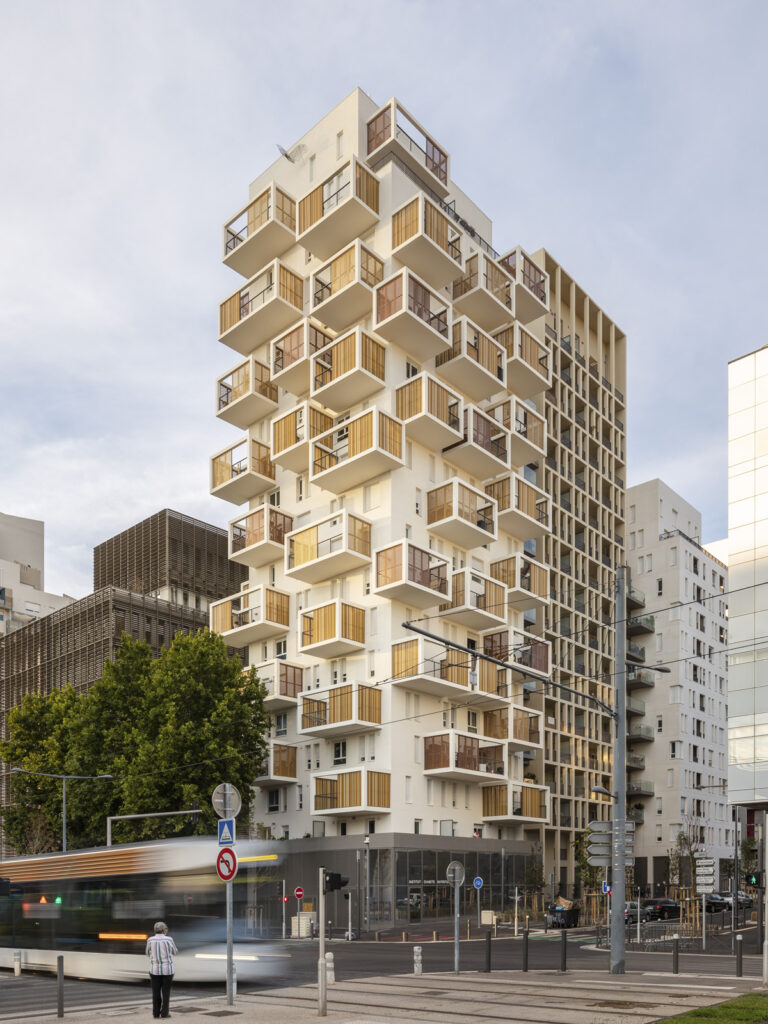
Kyrre: What kind of projects do you photograph? Are you specializing in one kind of photography, or do you photograph all kinds of architecture, or somewhere in between?
Adrien: I usually do all kinds of architecture, because I am still early in my career, but I am really attracted to public architecture. I like the way humans are interacting with spaces and textures, in the public domain.
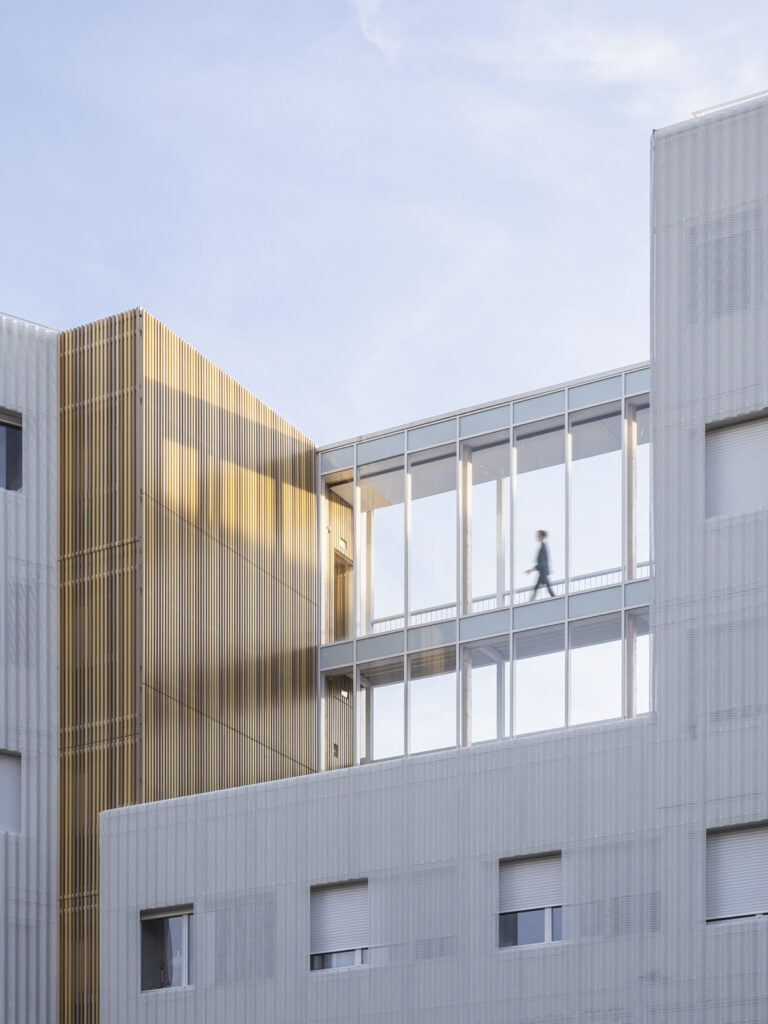
Kyrre: What is your process when arriving at a project? Could you share some insights into your workflow?
Adrien: I usually take a walk around the project first, without my camera. I want to know the project, feel the space and imagine the light throughout the day. I also create a shot list on my phone (thanks to Mike Kelley’s advice) by checking the course of the sun on a sun tracking app. I want to be free during the real shoot so as not to lose time. If possible, I ask the client for a scout a day or two before the shoot.
When the real shoot comes, I take my list, set up alarms so as not to lose the right light in the different areas and start following it. Having the shot already set is helping through the process.
I also always let myself have some time with the camera in hand, removed from the tripod. I like to have a few shots documenting the project in a photojournalistic way, waiting for the magic to happen while people are using the space.
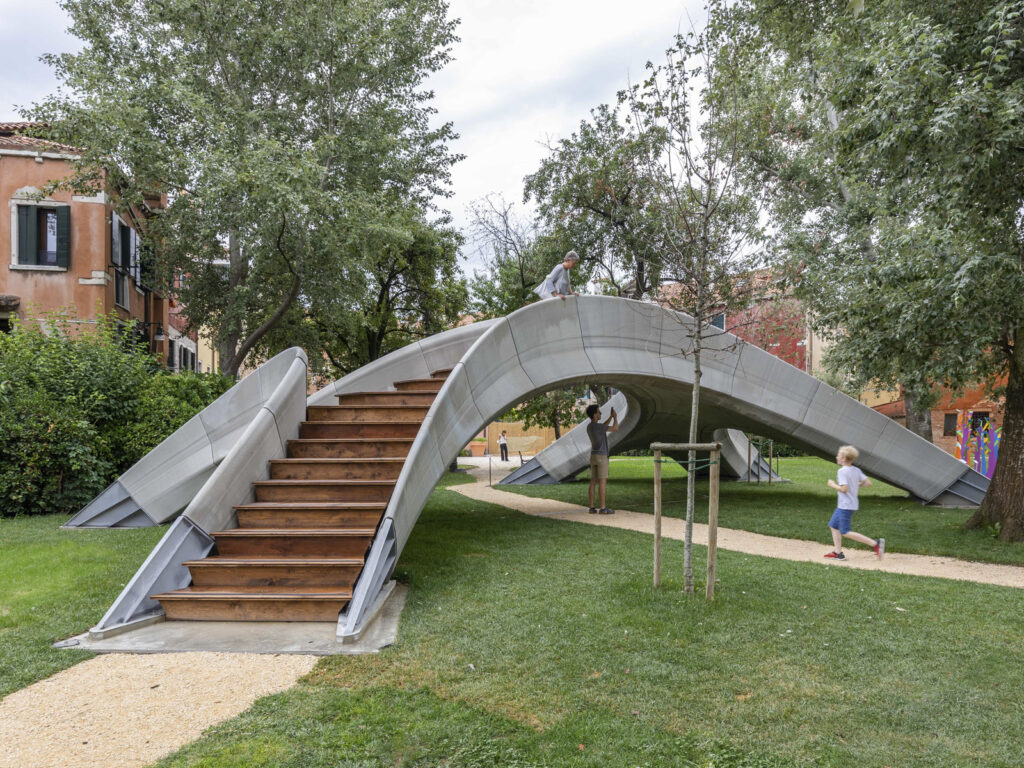
Kyrre: What kind of equipment do you use, and what’s your favorite lens?
Adrien: I am working on Canon equipment. I use a Canon Eos R body with L lenses (16-35mm F4L, 70-200mm F4 L, 50mm F1.8).
Until buying one, I usually rent a 24mm TSE on almost all my shoots. This one is by far my favorite lens! Maybe a 35mm tilt-shift would change my mind!
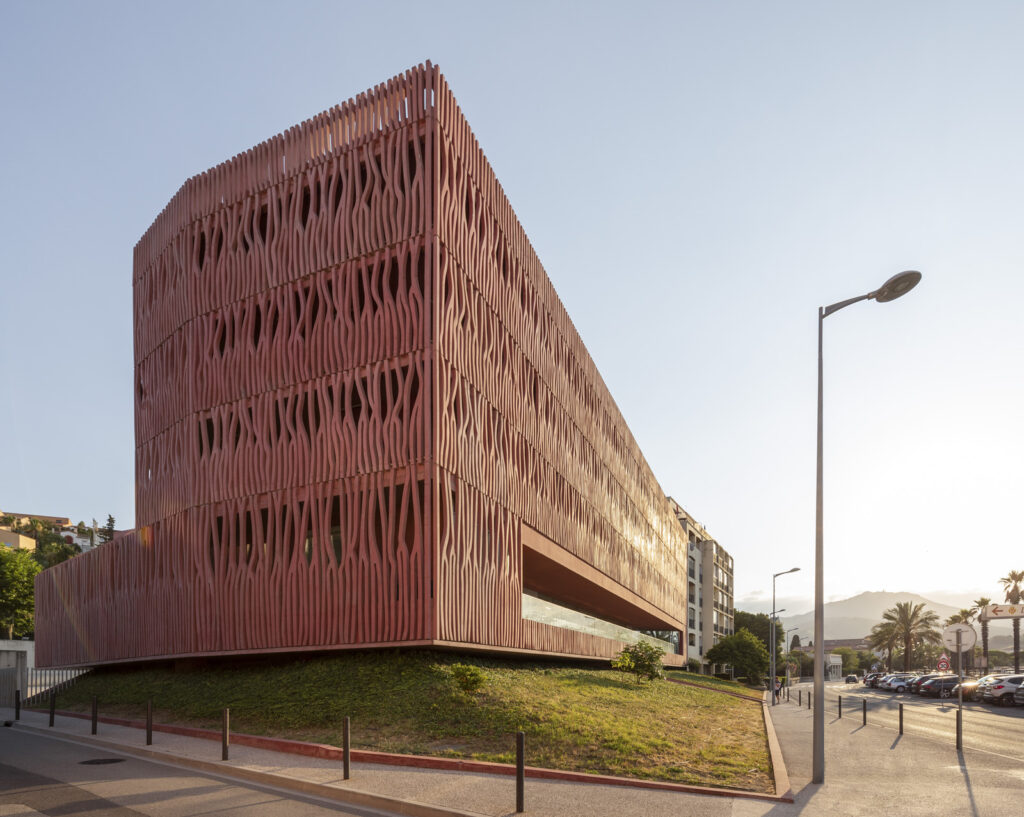
Kyrre: Where do you get inspiration for your work? Is it solely from other photographers, or other art forms as well?
Adrien: Most of my inspiration is coming from great photographers I follow since I entered Architecture photography. I could mention Laurian Ghinitoiu, 2Spacephoto, Mike Kelley, Fernando Guerra or Andy Macpherson but there are many more. Going through their website, podcast or articles helped me a lot in understanding this field.
During lockdown last year, I took a huge amount of time to analyze and learn from the photographers that inspire me.
I also take my inspiration from the art of architectural renderings. I like to analyze the way they play with light and compose with endless limits. They need to create a whole imaginary world around their image to transmit an emotion, to catch from the very beginning. I love the work of MIR studio, based in Norway.
Kyrre: How is your approach to interior photography? Do you use artificial lighting? Please elaborate on your process.
Adrien: I almost never use artificial light. I try – most of the time – to shoot a single shot in natural light. Sometimes, when necessary, I bracket to get a bigger dynamic range if the scene is too contrasty or if I must shoot at hours where the sun is too hard.
I totally understand photographers working with artificial lights because it creates the perfect image, shadows and reflections. It sells more. But I love the challenge of working with natural light, and the smooth, contrasty result it gives. When you only work with natural light, you need to chase it, all during the day. Everything needs to be set in order to be at the right place at the right moment. And it also leaves some room for spontaneity and randomness.
Also, natural light is one of the main assets of architects and I want to respect that and show the clever way they thought about it. The way they were projecting how light could influence the space, the texture, how shadows could draw nice forms and create contrast.
Whenever it is necessary I only use reflectors to bounce light wherever I want it to be.

Kyrre: You have developed a distinct style. What is your workflow when you get back to the office and start your post-processing? Do you have some post-processing secrets you could share with our readers?
Adrien: My post-processing secret is to keep it as natural as possible. I usually treat and sort all my photos in Lightroom and use Photoshop only to « clean » the image when necessary. I just play with the basic adjustments, brighten a bit of shadow, enhance vibrance sometimes and work with the curve tool in order to make some colors pop.
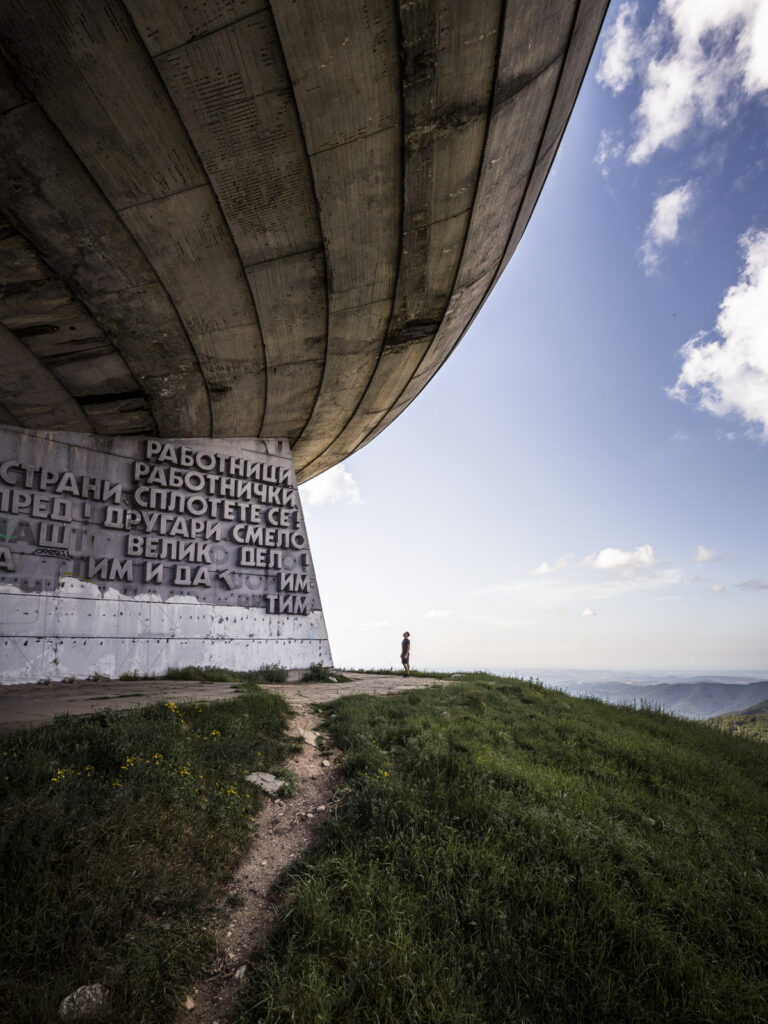
Kyrre: What is your thought process when finding the best composition?
Adrien: Composition is the first of the tools architectural photographers have in their toolbox and need to control perfectly. It allows the photographer to choose the way the spectators read the image, focus on a subject or appreciate the scale. It is the basis of every photograph and needs to be attentively determined before each trigger.
I used to shoot many photos on-site during my first projects. I quickly realized I was never satisfied with the composition. I was thinking that by cropping or adjusting afterward, in post-production, I could easily get the right composition. I was wrong…
There are two things you absolutely need to be careful of on-site: the light and the composition.
Now I try to spend more time composing, in order to have the right shot directly out of camera. To do that I use an iPad remotely. It helps me a lot to visualize the scene with a bigger screen or move furniture without going back and forth to the camera. For interior shots, it is absolutely necessary if you don’t want to walk 50km during the day!
The last piece to add when finding the right composition is human scale. It gives a scale to the space and shows the relation that can result between the living and the build.
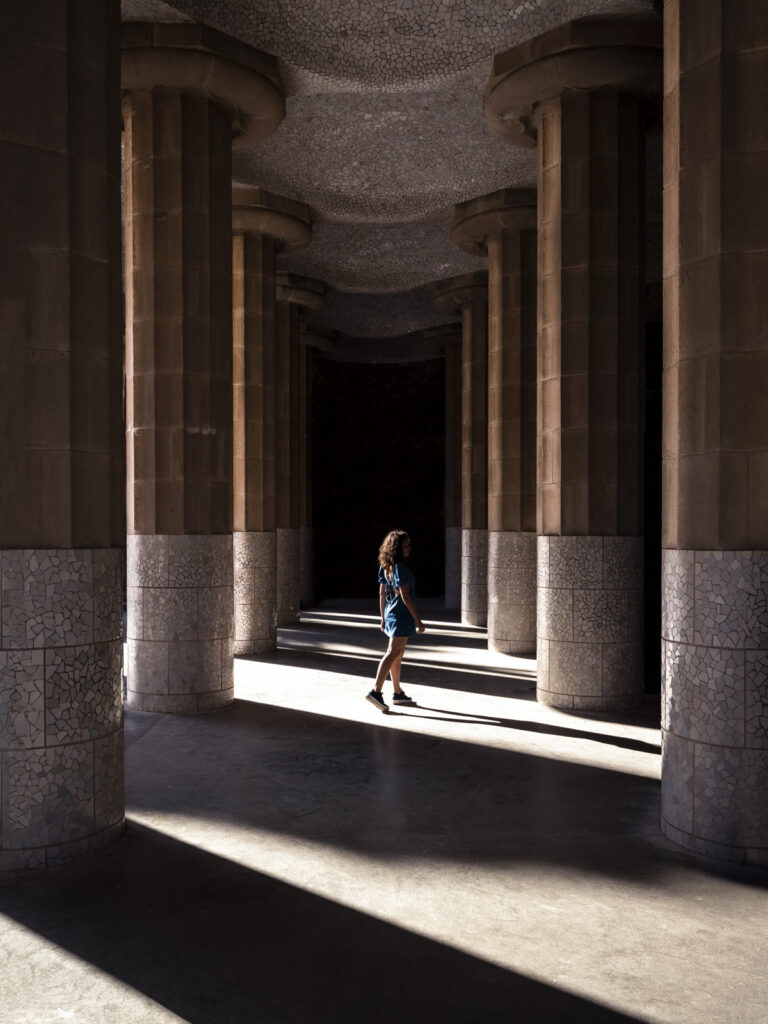
Kyrre: Do you take a lot of pictures, or do you concentrate on just a few compositions when you are on the site?
Adrien: I guess I answered that in the previous question aha! But I will add that when I started architectural photography, I think I was focused too much on doing a beautiful image, technically, as Instagram is telling me, because of my landscape photography background. Sometimes, I was too far from the actual reality.
Now I would say that my main focus is to show architecture as close as the architect wanted it to be. A huge relationship between the photographer and the architect is necessary for this.

Kyrre: Let’s talk about the business side of things. There are quite a few articles here on APA that dig into fee structures. How do you set your fee, and how do you see this evolving over time?
Adrien: I think I am still seeking what’s fitting me the best. I used to charge a day package at first, including the time on site, the retouching process and the licensing. But this method has its limits, mostly when the architect or the client is on-site with you. You always end up doing much more than what was planned.
So, by reading the articles by Mike on APA, I switched to charging a day rate for my time on-site + a licensing fee per image, including the post-production fee. It is fitting me better so far and covering all the extra photos the client is asking for. I know some of my colleagues in France are splitting the post-processing fee and the licensing one. I also need to evaluate if that would be a good solution for me.
You should get to know Adrien! Have a look through his Instagram and website.
